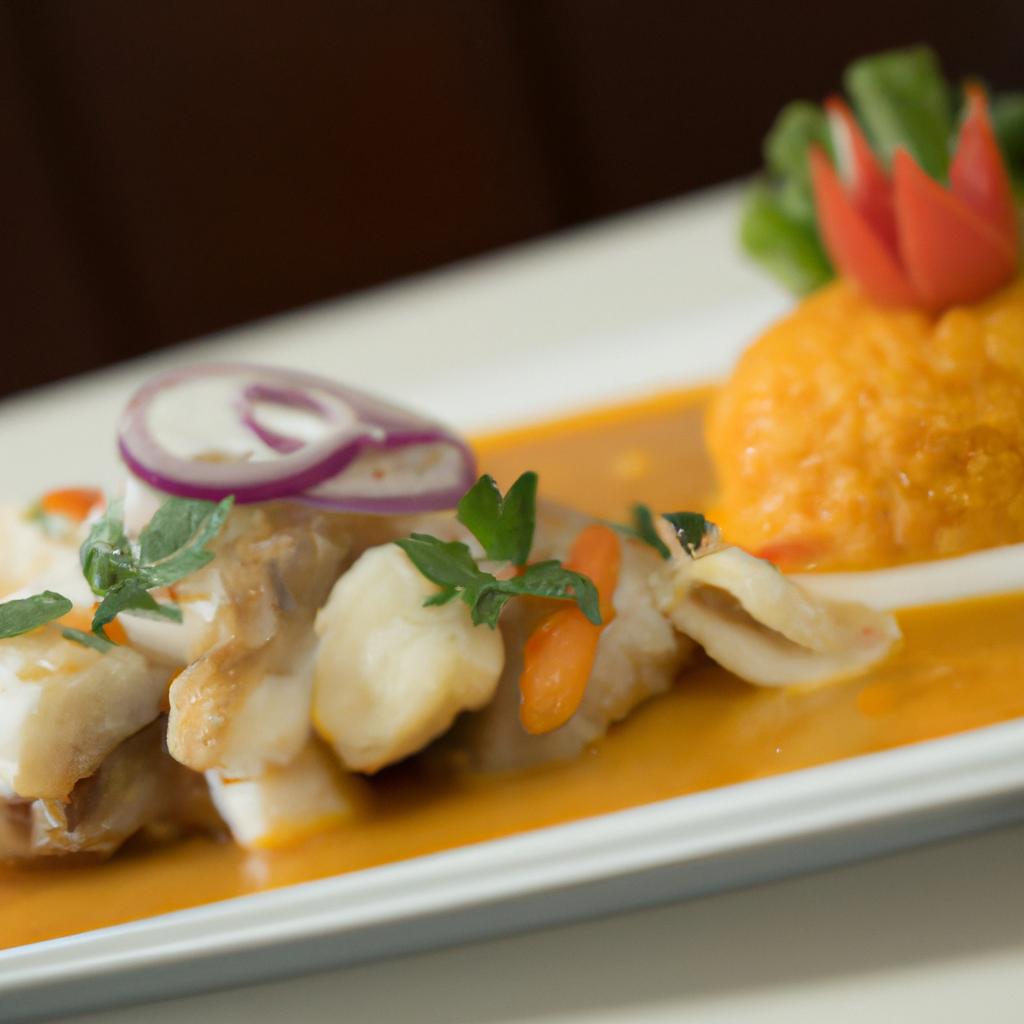Pescado a lo macho

Peruvian cuisine is full of tasty treats and flavorful dishes, but few are as iconic and beloved as Pescado a lo Macho. Meaning “fish in the style of the macho man,” this hearty and delicious seafood dish perfectly captures the bold, spicy flavors and diverse cultural influences of Peruvian cooking.
To make Pescado a lo Macho, you’ll need a few key ingredients: fresh fish, a tangy and spicy tomato-based sauce, and plenty of seafood staples like shrimp, squid, and mussels. But what sets this dish apart from other fish stews or soups is the unique blend of Peruvian spices and fiery peppers that give it its distinctive kick.
The origins of Pescado a lo Macho are somewhat murky, with different versions of the recipe cropping up across Peru’s coastal regions. However, most agree that it emerged as a favorite among working-class fishermen, who would toss whatever fresh catch they’d hauled in into a bubbling pot with simple spices, herbs, and veggies.
Over time, Pescado a lo Macho evolved into a more complex and sophisticated dish, with different regions adding their own unique twists and flavors. Some versions feature a creamy base, while others highlight the pungent heat of Ají amarillo peppers or use traditional Andean herbs like Huacatay.
Despite these variations, there are a few key elements that make Pescado a lo Macho a perennial favorite. The fresh seafood is always the star attraction, with a succulent and flaky white fish like cod or halibut soaking up the flavors of the rich sauce and hearty medley of shrimp, squid, and mussels.
The sauce itself is what truly brings the dish together, bursting with the savory tang of tomatoes, onions, and garlic, as well as the bold kick of Peruvian spice. Whether you’re using ají amarillo, rocoto, or a blend of hot peppers, you’ll want to take care to balance the heat with the acidity of lime juice and the sweetness of creamy evaporated milk or cheese.
Of course, no Pescado a lo Macho recipe would be complete without the vibrant garnishes and sides that help bring out all the different flavors and textures. Traditional accompaniments include fluffy white rice, fresh lime wedges, and plenty of chopped cilantro or parsley to add a burst of herby freshness.
Overall, Pescado a lo Macho is a lively and satisfying dish that reflects the rich culinary heritage of Peru, as well as the hardworking, adventurous spirit of its coastal communities. So gather your freshest seafood, chop up some peppers and herbs, and get cooking - you won’t be able to resist the bold, addictive flavors of this classic Peruvian recipe!
Ingredients:
- 4 white fish fillets (such as tilapia)
- 3 tablespoons of vegetable oil
- 1 large red onion, diced
- 2 garlic cloves, minced
- 2 teaspoons of paprika
- 1 teaspoon of cumin
- 1 teaspoon of dried oregano
- 1 teaspoon of salt
- 1/2 teaspoon of black pepper
- 1 can of diced tomatoes
- 1 tablespoon of aji amarillo paste (Peruvian yellow chili paste)
- 1/2 cup of fish stock
- 1/4 cup of heavy cream
- 1/4 cup of grated Parmesan cheese
- 1 cup of cooked white rice
- 1/4 cup of fresh cilantro, chopped
- Lime wedges for serving
Instructions:
- Season the fish fillets with salt and black pepper.
- In a large pan, heat the vegetable oil over medium-high heat.
- Once the oil is hot, add the fish fillets and cook for 3-4 minutes per side or until golden brown. Remove the fish from the pan and set aside.
- In the same pan, add the diced onion and garlic. Cook for 2-3 minutes or until the onion becomes translucent.
- Add the paprika, cumin, oregano, salt, and black pepper. Cook for 1-2 minutes, stirring constantly.
- Add the diced tomatoes, aji amarillo paste, and fish stock to the pan. Stir well and bring the mixture to a simmer. Cook for 5-7 minutes or until the sauce thickens.
- Add the heavy cream and Parmesan cheese to the pan. Stir well to combine and cook for an additional 2-3 minutes.
- Return the fish fillets to the pan with the sauce, spooning the sauce over the fish. Cook for 2-3 minutes or until the fish is cooked through.
- Serve the Pescado a lo Macho over a bed of cooked white rice. Top with fresh cilantro and lime wedges for serving. Enjoy!